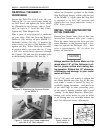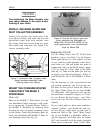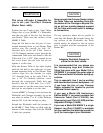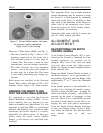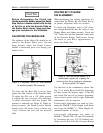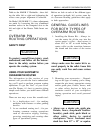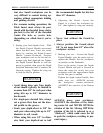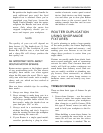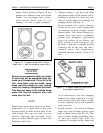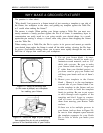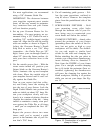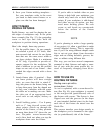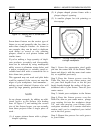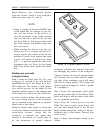
555970 MARK V – MOUNTED OVERARM PIN ROUTER
20
Re-position the depth control handle for
each additional pass until the final
depth-of-cut is attained. Once you’ve
completed your final pass, loosen the
Depth Control Handle, raise the motor,
retighten the Handle and turn off the
motor. Only when the motor has
stopped completely should you re-
move and inspect your workpiece.
NOTE
The quality of your cut will depend on
three factors: (1) The depth-of-cut, (2) Your
feed rate and (3) The condition of your
Router Bit. Shallow cuts, a slow feed rate
and a sharp Bit will always produce the
best quality cut.
AN IMPORTANT NOTE ABOUT
ROUTER MOTOR SPEEDS
Router motors operate at the highest speeds
of any woodworking tools. For this reason,
unsightly burn marks can often appear
where the Bit meets the wood. This is espe-
cially true with hard woods such as maple,
cherry, oak, etc. which are best worked at
slower speeds.
Here are three valuable tips for avoiding
burn marks:
1. Always use sharp, clean bits.
2. Never attempt to make deep cuts in a
single pass. Taking multiple light passes
will always produce better results. For
best results, make the depth-of-cut on
your final pass 1/16" or less.
3. Always work in a continuous motion
without dwelling and don’t forget to
raise the rotating bit from the workpiece
before turning the motor off.
4. If your Router is a single speed model,
consider purchasing a plug-in after-
market electronic router speed control
device. Such devices are fairly inexpen-
sive and allow you to slow your Router
motor down to the correct speed for
making smooth, burn-free cuts on even
the hardest of woods.
ROUTER DUPLICATION
USING SHOP-MADE
FIXTURES
If you’re planning to make a large quantity
of the same product, the fixture duplicating
method is best for speed and accuracy – and
making your own fixtures to cut out and
shape these products is easier than you
might think.
Fixtures are usually made from plastic lami-
nate-covered materials such as countertop
cut-outs for sinks. That’s because these ma-
terials will hold up under continuous use
much better than ordinary wood. Sink cut-
outs are readily available at plumbing sup-
ply houses, from contractors, at cabinet
shops, or even at many home centers or
hardware stores...and are usually very inex-
pensive.
TYPES OF FIXTURES
There are three basic types of fixtures for pin
routing:
1. Screw-down fixtures...are the easiest
fixtures to make, but require more time
to attach and remove your workpieces
than clamp-in or profile fixtures With
this type of fixture, screws (or nails) are
used to hold your workpiece to the fix-
ture.
When building a screw-down fixture, be
sure to position the screw holes so your
router bit will not cut into the screws
once the workpiece is attached. The ex-




